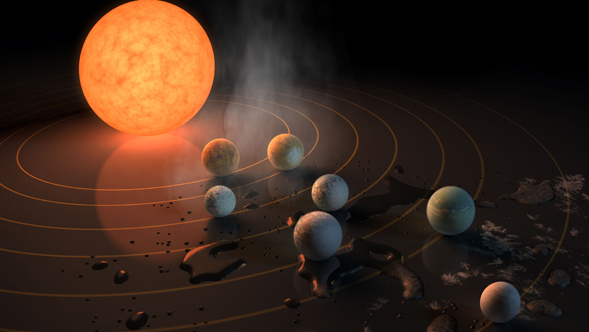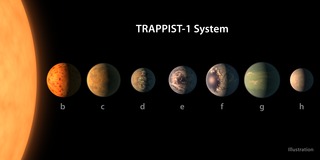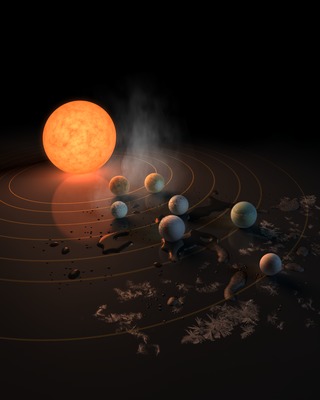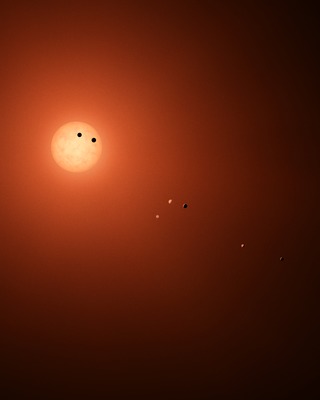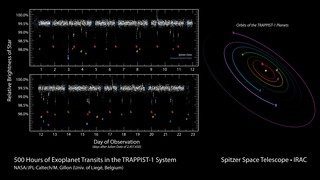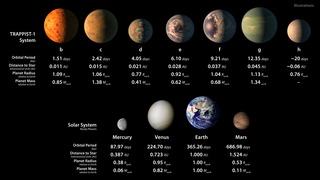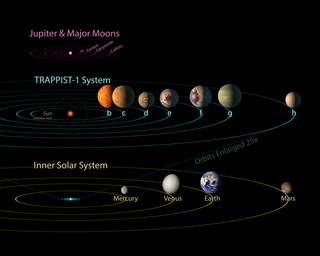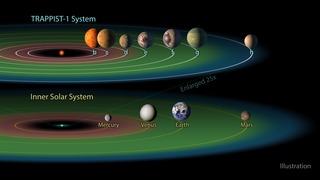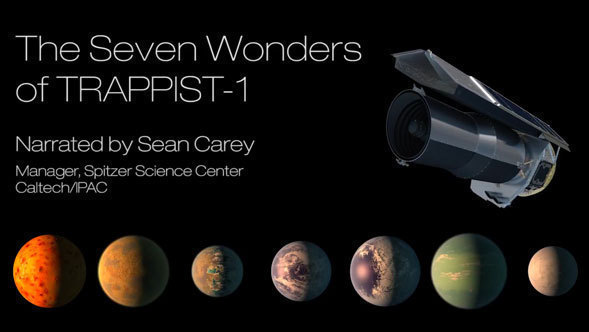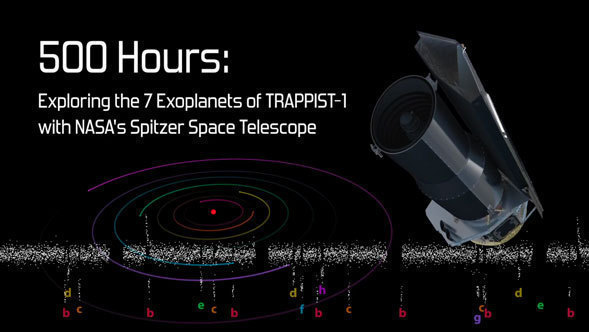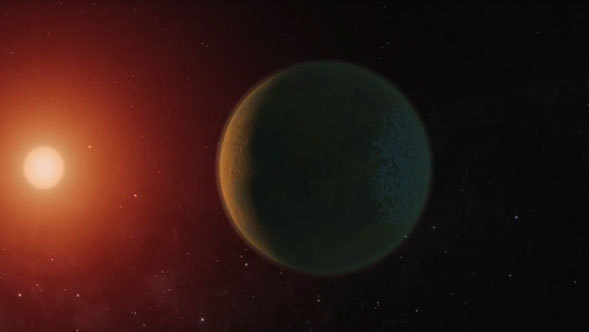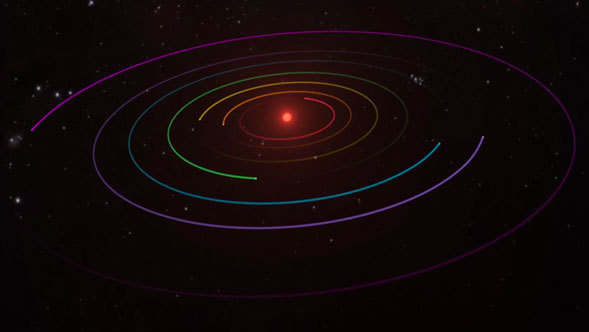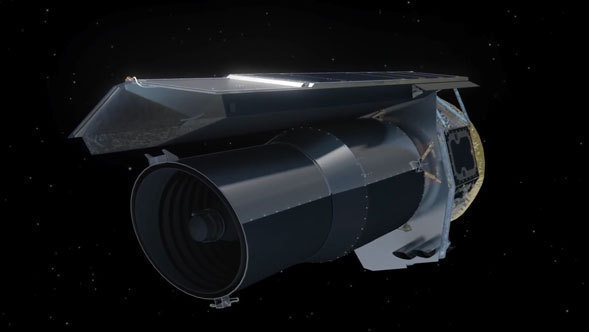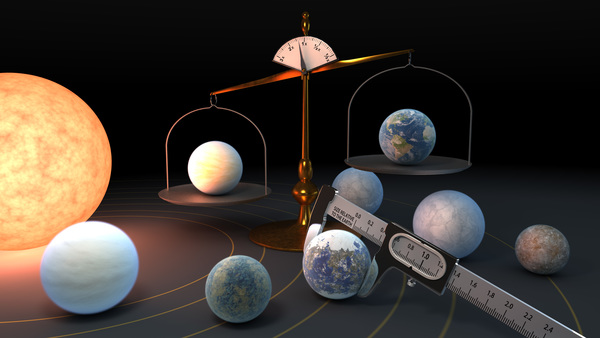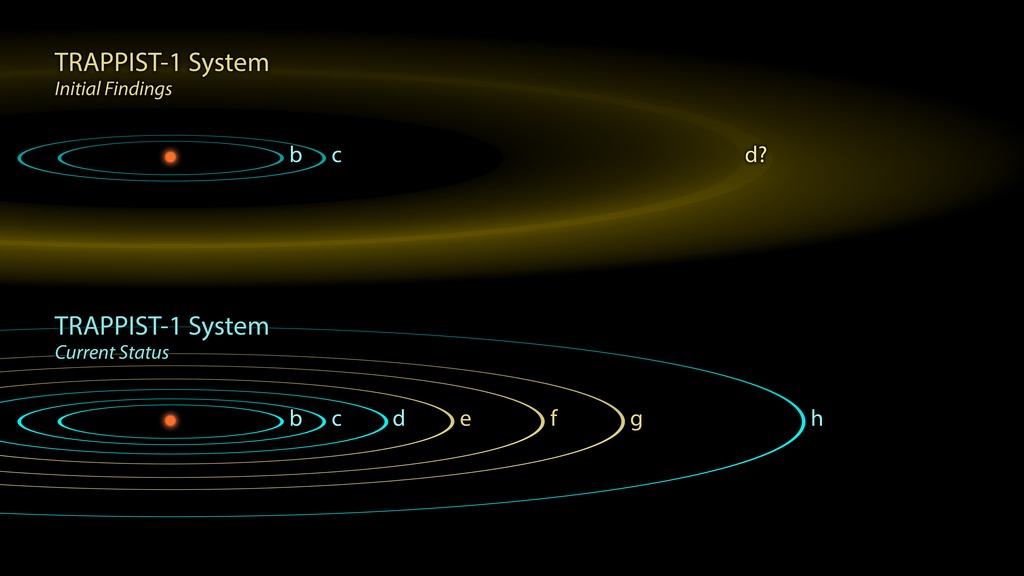
Credit: NASA/JPL/Caltech/R. Hurt (IPAC)
Artwork • February 22nd, 2017 • ssc2017-01i
ssc2017-01i
The first observations of the TRAPPIST-1 system reported in 2016 revealed three planets orbiting a small, red-dwarf star, though the exact location of the outermost one, was not well-determined (yellow band, top image). Follow-up observations with NASA's Spitzer Space Telescope, as well as ground-based telescopes, dramatically changed our understanding of this system, revealing a total ofseven planets in Earths size range.The original TRAPPIST-1d was found to have actually been the mixed-up signals of three other planets e, f, and g (yellow orbits, bottom image), and an entirely new d and h were also added to the system.
NASA's Jet Propulsion Laboratory, Pasadena, California, manages the Spitzer Space Telescope mission for NASA's Science Mission Directorate, Washington. Science operations are conducted at the Spitzer Science Center at Caltech in Pasadena. Spacecraft operations are based at Lockheed Martin Space Systems Company, Littleton, Colorado. Data are archived at the Infrared Science Archive housed at Caltech/IPAC. Caltech manages JPL for NASA.
About the Object
- Name
- TRAPPIST-1
- Type
- Planet > Type > Gas Giant
- Distance
- 40 Light Years
